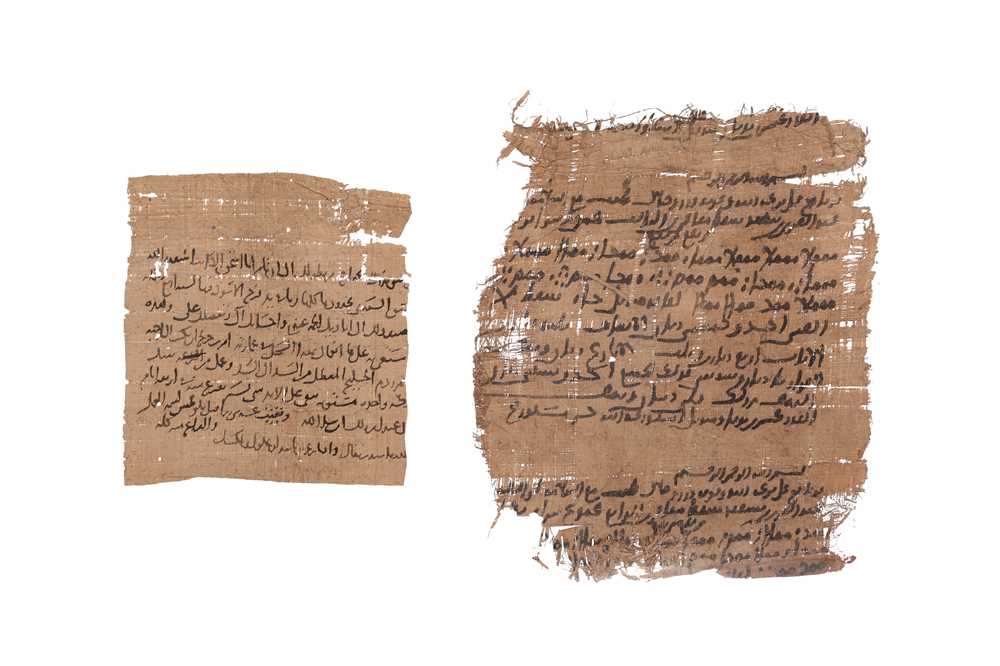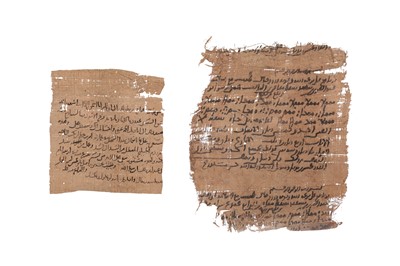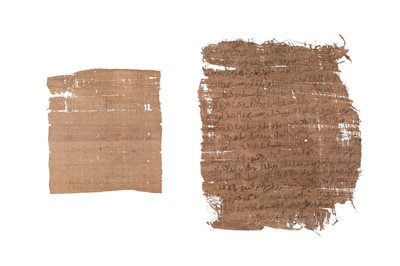29th Apr, 2022 11:00
Islamic Art - Property of a European Collector Part III
TWO PAPYRUS FRAGMENTS
Possibly Fustat, Egypt, 9th century
TWO PAPYRUS FRAGMENTS
PROPERTY FROM AN IMPORTANT EUROPEAN PRIVATE COLLECTION
Possibly Fustat, Egypt, 9th century
Two Arabic religious manuscripts on papyrus, one fragment with 8ll. of black ink proto-naskh script to the page, the latter with 15ll. of black ink writing in a similar script to ancient Syriac documents, no evidence of illumination or verse markers, conserved into two hard plastic folders, 19.5cm x 18cm and 27cm x 22.5cm.
In the late 19th and early 20th centuries, a large group of papyrus documents was discovered, mostly made in Upper Egypt and dating from the first few centuries of Islamic history. Although mostly fragmentary, several of these documents managed to survive in thanks only to the properties of the Egyptian soil long known for its enhanced ability to preserve organic matter. The maker's choice of papyrus over vellum is also significant in helping us to discern the nature of the documents; at the time, parchment was a very expensive material while papyrus was readily available, therefore suggesting that the documents had an everyday origin. Despite their fragmentary nature and their hard legibility, documents like these offer a fascinating insight into the early stages and developments of not only Arabic scripts but also Arab history.
These fragments show several affinities with a larger group of fragmentary papyrus documents offered at Sotheby's London, 10 June 2020, lot 1, and with a papyrus letter in very early black naskh script, attributed to 8th-century Egypt, sold at Christie's London, 30 April 2004, lot 297.
(Quantity:2)
Dimensions: 19.5cm x 18cm, 27cm x 22.5cm
Sold for £3,250
Includes Buyer's Premium
Do you have an item similar to the item above? If so please click the link below to request a free online valuation through our website.


